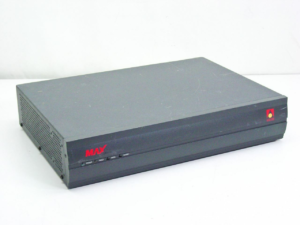As a part of my job at Cisco I’ve been looking into Zscaler and their offerings. It started me thinking back to the early days of remote access, and I figured it would make a good topic for Netstalgia.
I wrote in the past about how bulletin board systems (BBSs) work, and in another article I resurrected my old BBS in an Apple II emulator. In a nutshell, a computer with a BBS set up had a modem on it and users dialed in using their own modem over dial-up phone lines. I’m not sure how many readers are young and don’t remember modems, and how many are dinosaurs like me, but as a reminder, modems connect computers to phone lines. One modem is set to answer any call that comes in, and waits. Then another user with a modem inputs the phone number of the other end into his software. His modem dials out, the phone rings, and the other modem answers with a carrier tone. Then the dialer responds and after some negotiation on the line, a connection is established and data is sent.
Now in my first job, at a small company in Marin California in the mid-1990’s, we had one computer set up as a dedicated remote access server. It had a single modem with a single phone line, and ran Apple Remote Access server, since we were a Mac shop. We only had one user with a laptop, the CEO, so when he traveled he would dial-in and be able to access basic functions like email and our file server. There was no Internet access back then.
When I moved on to a consulting company, I did a few more industrial set ups. Usually these involved remote access servers that were comprised of a bunch of modems and a LAN port. The remote access server would accept a bunch of phone lines and then provide TCP/IP or AppleTalk connectivity to the network. By this time users had Internet connectivity. The Shiva LanRover is one example of this sort of device.
When I worked at the San Francisco Chronicle, we had an Ascend Max which served this purpose. The Max had two DS3 lines plugged into it. It was the first time I had seen a DS3, and I remember being excited to learn the phone company could deliver a circuit over coax. (It actually entered the building on fiber and went over coax from the MPOE.) The DS3 was an ISDN PRI, with 24 dial-in phone lines multiplexed over a single digital circuit. It took me months to find someone who had the password to the Max, and when I finally got in I found out that the second DS3 was unconfigured. Users had been complaining about busy signals and all I had to do was change a few menu settings.
Remote access dial-up was heavily used at the Chronicle. Reporters filed their stories via modem. VPN was just coming out, and I decided to replace the dial-up with VPN + dial-up. A company called Fiberlink provided a dialer with a vast database of local Internet dial-up lines from a variety of carriers they contracted with. Our users would pick a local phone line and then dial into it. They then launched our Nortel VPN client to establish connectivity. This saved us a fortune on 800-number charges, but our users hated it. As a good senior guy, I did the initial design and left implementation to a junior guy. I’m amazed he still talks to me. (And he’s not junior anymore!)
Despite being a long-time Cisco guy, I never touched the Cisco remote access stuff. I did use 2500-series routers with serial ports as terminal servers in the lab, but I never connected modems to them. Still, when I passed my CCNP, one exam covered remote access and I needed to know a lot about modems.
Nowadays I rarely log into VPN. Most systems I need to access can authenticate through our Zero Trust/SSO system without the need for a connection to Cisco’s network. We’ve come a long way since the days of dial-up. And while I said I missed wiring in another post, I sure don’t miss modem tones!

